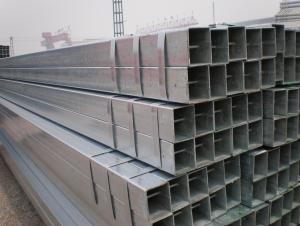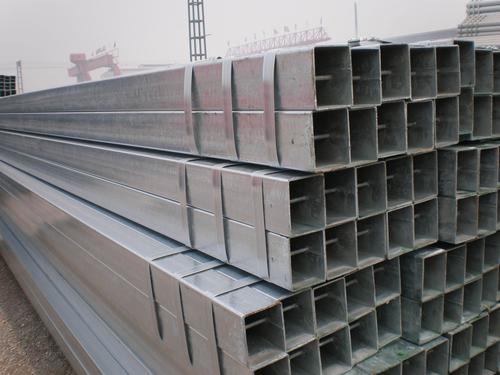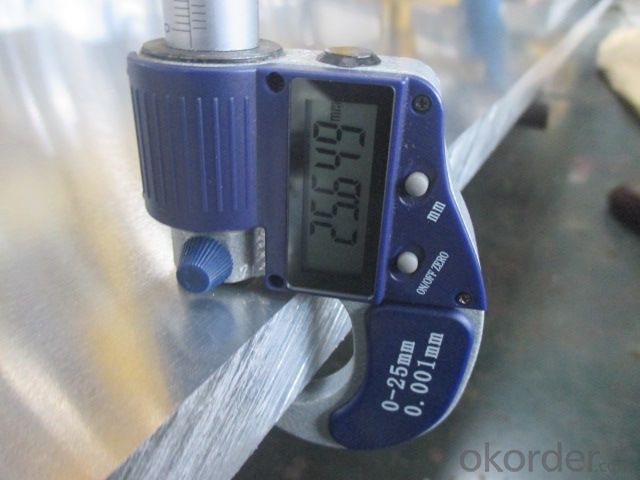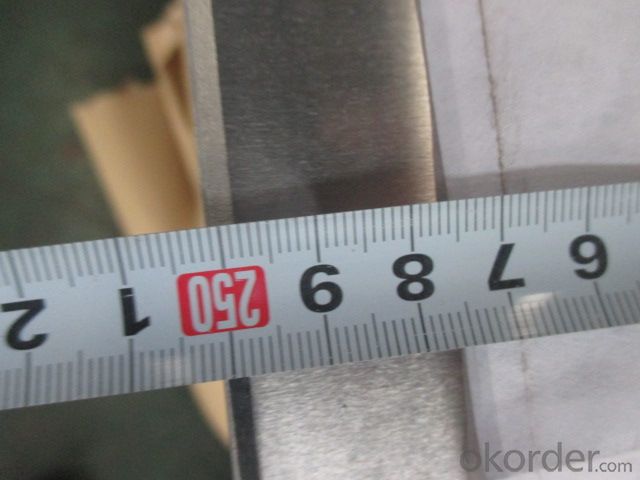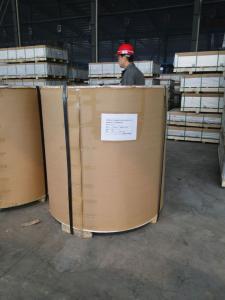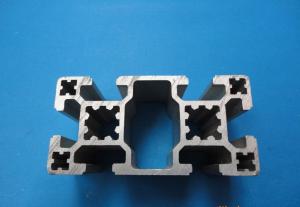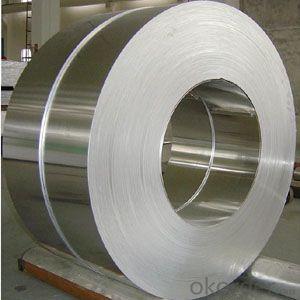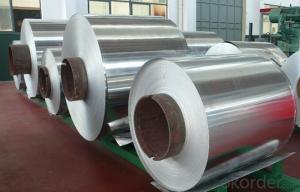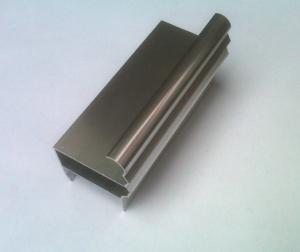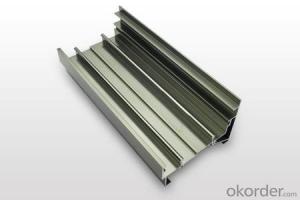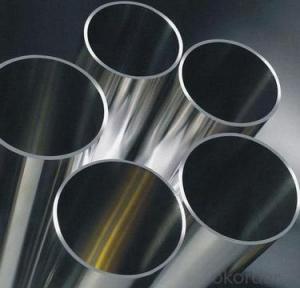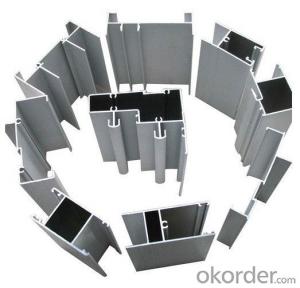Customized Colorful Aluminum Profiles - Aluminium Foil Stocks Warehouse Warehouse Price
- Loading Port:
- Shanghai
- Payment Terms:
- TT or LC
- Min Order Qty:
- 2 m.t.
- Supply Capability:
- 5000 m.t./month
OKorder Service Pledge
OKorder Financial Service
You Might Also Like
1.Structure of Product Description
Cold rolled aluminum sheet and also the other grades are all best-selling in China now,
is widely used in the field of construction field and decoration field, etc.
There are many different grades, such as: 1000 series, 2000 series, 3000 series, 5052,5754,5083,6061,6063,8011, etc.
The temper is include H14, H22, H24, H44,H112,H114,etc.
2. Main features of the product
a.Competitive price
b.Frist-Class Service.
c. Shortest service.
3. Image.
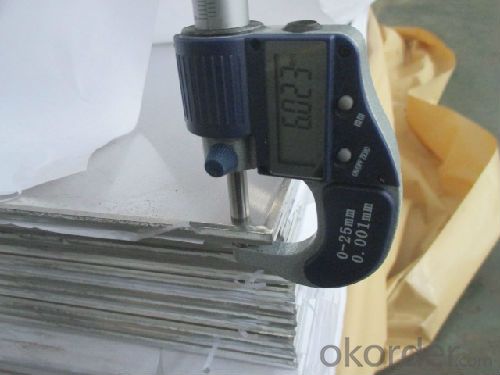
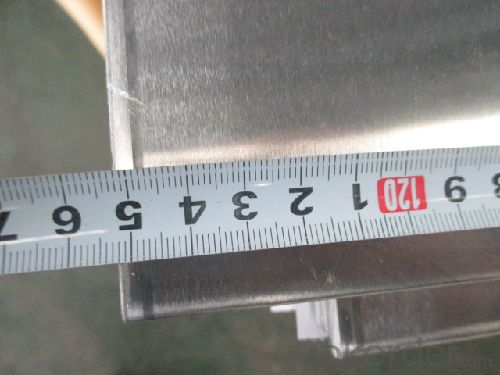
4. Product detailed sizes:
1000mm*2000mm, 1219mm*2438mm,1mm*2440mm, 1250mm*2500mm,1500mm*3000mm, etc.
5. FAQ:
What is the quality standard?
---Usually our standard is GB3880-2006 or others.
What is the width range?
---It is from 1000mm to 2500mm, etc.
---Normally it is around 9000 tons totally.
Where is your client from?
---Normally it is from Japan, ENGLISH, SINGAPORE, ETC.
What is your mainly products?
---Normally they are aluminum sheet,
checkered sheet, mirror finish aluminium cold roled and hot rolled
sheet, aluminum casting coil, etc.
- Q: Can aluminum profiles be used in modular wall systems?
- Yes, aluminum profiles can be used in modular wall systems. Aluminum profiles are lightweight, durable, and versatile, making them an ideal choice for constructing modular walls. They can be easily assembled, disassembled, and reconfigured to meet specific design requirements. Additionally, aluminum profiles offer excellent structural integrity and can accommodate various finishes, such as glass panels or cladding, enhancing the aesthetics of the modular wall system.
- Q: Are aluminum profiles suitable for use in medical device manufacturing?
- Yes, aluminum profiles are suitable for use in medical device manufacturing. Aluminum is a widely used material in various industries, including medical device manufacturing, due to its excellent properties. Firstly, aluminum profiles are lightweight yet strong, making them ideal for medical devices that require both durability and portability. The lightweight nature of aluminum profiles allows for easier handling and reduces the overall weight of the medical equipment, which can be beneficial for healthcare professionals and patients. Secondly, aluminum is corrosion-resistant, which is crucial in medical device manufacturing. Medical devices often come into contact with liquids, chemicals, and bodily fluids, which can lead to corrosion and degradation over time. However, aluminum profiles have excellent resistance to corrosion, ensuring the longevity and reliability of the medical devices. Additionally, aluminum profiles can be easily formed into complex shapes and designs, allowing for customization and versatility in medical device manufacturing. This flexibility in design enables the production of devices that meet specific requirements, ensuring the best possible functionality and usability for medical professionals and patients. Furthermore, aluminum is non-toxic and non-magnetic, making it suitable for medical applications where these properties are essential. Aluminum profiles do not pose any health risks or interfere with magnetic resonance imaging (MRI) or other sensitive medical procedures. In conclusion, aluminum profiles are highly suitable for use in medical device manufacturing due to their lightweight, corrosion-resistant, customizable, non-toxic, and non-magnetic properties. These factors contribute to the production of high-quality, durable, and safe medical devices that meet the demanding needs of the healthcare industry.
- Q: Can aluminum profiles be used in electrical panel manufacturing?
- Indeed, electrical panel manufacturing can incorporate aluminum profiles. Aluminum, renowned for its lightweight and enduring nature, boasts remarkable electrical conductivity, rendering it apt for electrical panel applications. Moreover, its proficiency in heat dissipation proves vital in averting system overheating. Aluminum profiles can be effortlessly shaped and tailored to adhere to the unique prerequisites of electrical panel designs. In addition, aluminum's resistance to corrosion guarantees the durability of the electrical panel. Overall, owing to their myriad advantages, aluminum profiles remain a favored option in electrical panel manufacturing.
- Q: Aluminum profiles 1, 2, 3, 4, 5, 7, 6, 8 line characteristics, what is the difference, please master more advice
- No, ah, who makes me enthusiastic?I can only say something about it1 system heat conduction, high conductivity, corrosion resistance, good weldability, generally applicable to electrical appliances, heat exchangers, plates, strips5 medium strength alloy, good formability, corrosion resistance, weldability, generally applicable to ships, vehicles, tubes, bars6 series can be very good, continuous extrusion, corrosion resistance, surface treatment is good, generally applicable to complex sections, hollow profiles, high-speed rail subwayThe alloy of 7 strength, welded structural alloy, solid profile alloy seems to be a shell case. Military companies have had this order beforeIt's too general. There are many alloys in each department
- Q: 80 series insulation aluminum broken bridge 1.4 thick, one square kilogram, how many kilograms aluminum material?
- Each brand of profiles, aluminum weight is not the same, but within the unit area is about 8 kilograms, little difference
- Q: This question asks for methods to guarantee the reliability of aluminum profiles used in a construction project.
- <p>To ensure the quality of aluminum profiles in your building project, first, source from reputable suppliers with a proven track record. Request for certifications such as ISO 9001 for quality management systems. Inspect the profiles for uniformity in thickness and straightness. Check for surface defects like scratches or dents. Ensure the profiles meet the required strength and durability standards by requesting test reports or conducting your own tests. Verify the alloy composition to ensure it's suitable for your project's environmental conditions. Lastly, consider the manufacturer's warranty and after-sales service as an indicator of their confidence in product quality.</p>
- Q: Are aluminum profiles suitable for decorative applications?
- Yes, aluminum profiles are suitable for decorative applications. Aluminum is a versatile material that offers several advantages in decorative applications. Firstly, aluminum profiles can be easily shaped and formed into various designs, allowing for endless possibilities in decorative applications. They can be extruded into different shapes, sizes, and patterns, giving designers the freedom to create unique and aesthetically pleasing decorative elements. Moreover, aluminum profiles offer excellent durability and corrosion resistance, making them suitable for both indoor and outdoor decorative applications. Aluminum is known for its ability to resist rust and weathering, ensuring that decorative elements made from aluminum profiles will maintain their appearance for a long time. Additionally, aluminum profiles can be finished in various ways to enhance their decorative appeal. They can be anodized or powder-coated to add color, texture, and protection to the surface. These finishing options allow for customization and the ability to match the profiles with the overall design scheme. Furthermore, aluminum profiles are lightweight yet strong, making them easy to install and handle during the decorative application process. This characteristic also makes them suitable for applications where weight is a consideration, such as in suspended or wall-mounted decorative elements. Lastly, aluminum is a sustainable and environmentally friendly material. It is 100% recyclable, and the production process of aluminum profiles requires considerably less energy compared to other materials. Choosing aluminum profiles for decorative applications aligns with sustainable design principles and contributes to reducing the environmental impact. In conclusion, aluminum profiles are highly suitable for decorative applications due to their versatility, durability, corrosion resistance, customization options, lightweight nature, and sustainability. Whether it's for interior or exterior decorative elements, aluminum profiles offer a wide range of possibilities to enhance the aesthetic appeal of any space.
- Q: Are aluminum profiles resistant to chemicals or solvents?
- Yes, aluminum profiles are generally resistant to chemicals and solvents. Aluminum is known for its excellent corrosion resistance, and this property extends to its resistance to most chemicals and solvents. However, it is important to note that the level of resistance can vary depending on the specific chemical or solvent involved. Some highly corrosive chemicals or solvents may still have an effect on aluminum profiles over time. Therefore, it is advisable to consult the manufacturer or conduct specific tests to ensure compatibility with a particular chemical or solvent.
- Q: What are the different shapes available for aluminum profile cross-sections?
- There are several different shapes available for aluminum profile cross-sections, depending on the specific application and requirements. Some common shapes include: 1. Square: This shape features equal sides and right angles, making it suitable for applications where stability and strength are important, such as structural framing. 2. Rectangular: Similar to square profiles, rectangular profiles have unequal sides and can be used in a wide range of applications, including enclosures, frames, and supports. 3. T-shaped: This shape consists of a central vertical section with a horizontal section extending from one side, resembling the letter "T." T-shaped profiles are often used for joining two components or for providing additional support to structures. 4. L-shaped: L-shaped profiles have a 90-degree angle and are commonly utilized as brackets, corner reinforcements, or frame components. 5. Round: Round aluminum profiles have a circular cross-section and are frequently employed in applications where a smooth, curved appearance is desired, such as handrails, furniture, or decorative elements. 6. I-beam: Resembling the letter "I," these profiles have a central vertical section (known as the web) and two horizontal sections (known as the flanges). I-beams are widely used in construction and structural engineering due to their high strength-to-weight ratio. 7. U-channel: U-channel profiles have a U-shaped cross-section and are often used as edge protectors, trim, or guides. They can also be utilized as tracks for sliding doors or as reinforcement beams. 8. Hexagonal: Hexagonal profiles have six sides and can be used in applications where increased strength and rigidity are required, such as machinery frames or support structures. These are just a few examples of the different shapes available for aluminum profile cross-sections. It is important to choose the most appropriate shape based on the specific requirements of the intended application to ensure optimal performance and functionality.
- Q: Is it possible to utilize recycled aluminum extrusions in a construction project to lessen the environmental footprint?
- <p>Yes, using recycled aluminum extrusions in your building project can significantly reduce environmental impact. Recycled aluminum requires less energy to produce compared to new aluminum, reducing greenhouse gas emissions. It also conserves natural resources by decreasing the need for mining. Additionally, incorporating recycled materials can contribute to a project's sustainability goals and potentially qualify for green building certifications, enhancing the building's marketability and appeal.</p>
Send your message to us
Customized Colorful Aluminum Profiles - Aluminium Foil Stocks Warehouse Warehouse Price
- Loading Port:
- Shanghai
- Payment Terms:
- TT or LC
- Min Order Qty:
- 2 m.t.
- Supply Capability:
- 5000 m.t./month
OKorder Service Pledge
OKorder Financial Service
Similar products
Hot products
Hot Searches
Related keywords
